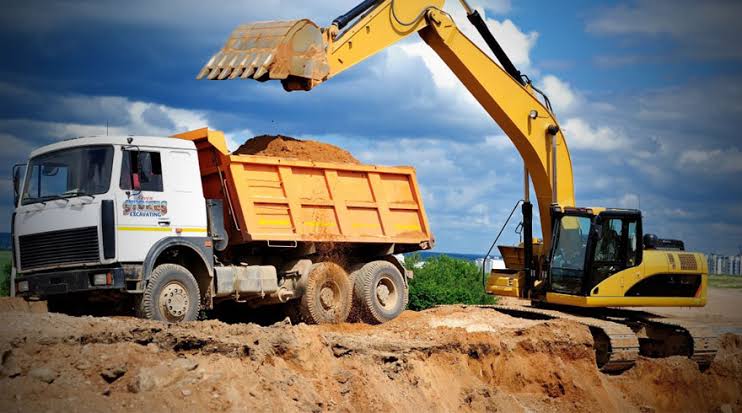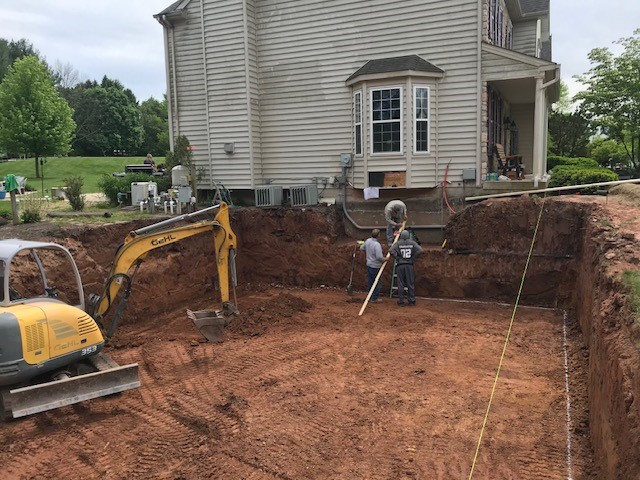Lancaster Trenching - Professional Trenching Solutions in Lancaster, Ohio
Lancaster Trenching - Professional Trenching Solutions in Lancaster, Ohio
Blog Article
Extensive Expedition: The Scientific Research Behind Superior Excavation Practices
The realm of excavation techniques is a domain where science links with workmanship to unearth the secrets hidden underneath the earth's surface. From old hand devices to modern hydraulic excavators, the advancement of excavation methods has actually been a testament to human resourcefulness and technological innovations. What really sets superior excavation methods apart is a deep understanding of geological concepts, combined with the usage of innovative devices and methods. By discovering the science behind these practices, we can uncover the tricks that lie underneath our feet and appreciate the precision and knowledge that enter into every dig.
Evolution of Excavation Strategies
Throughout background, the advancement of excavation methods has played a critical function in advancing construction techniques and archaeological discoveries. From the primary devices used by our forefathers to the advanced machinery used in modern-day times, the progression of excavation methods has actually dramatically transformed how we come close to various tasks.
In ancient times, hand-operated labor with fundamental tools such as shovels, pickaxes, and wheelbarrows was the key technique of excavation. This labor-intensive procedure limited the deepness and scope of excavations, often causing sluggish progress and limited access to specific websites. Nevertheless, as worlds progressed, so did the tools and strategies used for excavation.
The Industrial Change noted a transforming factor in excavation methods with the intro of steam-powered equipment. In modern times, technology plays a pivotal function in excavation, with innovations like GPS systems, drones, and 3D scanning improving precision and effectiveness in the area.
Duty of Technology in Excavation

The combination of advanced modern technology has basically reinvented the field of excavation, boosting precision and performance to unprecedented levels - septic ohio. One of the vital technological advancements that has actually substantially affected excavation methods is the usage of General practitioner systems.
In addition, the development of 3D modeling and simulation software application has streamlined the preparation process for excavation tasks. Drivers and designers can now picture the entire excavation procedure before beginning, enhancing and recognizing prospective difficulties process. Together with this, the application of drones in excavation tasks has assisted in aerial studies, volumetric dimensions, and site evaluations with unmatched speed and accuracy.
Geological Concepts in Excavation
An understanding of geological principles is essential for making sure the architectural stability and security of excavation websites. Geological elements play an important role in figuring out the usefulness and safety of excavation jobs (lancaster excavation). One crucial geological concept to consider is the kind of soil or rock existing at the website. Various dirt kinds, such as clay, sand, or crushed rock, have varying levels of stability and need different excavation techniques. As an example, cohesive soils like clay may require additional support to prevent collapses, while sandy dirts may be prone to disintegration during excavation.
In addition, the geological framework of the area, including mistakes, cracks, and rock developments, should be thoroughly assessed to identify possible dangers and difficulties. Excavating near geological fault or unpredictable rock formations can site here result in instability and potential threats. By carrying out detailed geological studies and analysis, designers and excavators can establish techniques to reduce risks and ensure the successful conclusion of excavation jobs. Ultimately, incorporating geological concepts into excavation practices is vital for accomplishing safe, effective, and sustainable outcomes.

Latest Tools for Excavation
In the realm of excavation practices, contemporary advancements in tools have actually changed the performance and accuracy of excavation procedures. Among the current tools making waves in the industry is making use of drones equipped with advanced imaging modern technology. These drones can provide detailed airborne studies of excavation websites, providing real-time data on topography and potential risks. This info aids in better preparation and decision-making throughout the excavation process.
One more cutting-edge device obtaining appeal is the implementation of 3D printing modern technology for producing custom-made excavation equipment. This enables the production of specialized devices that are customized to the specific needs of a job, increasing performance and decreasing downtime.
Furthermore, innovations in materials scientific research have brought about the advancement of stronger and a lot more durable excavation devices. lancaster excavation. Tungsten carbide-tipped excavator add-ons, as an example, deal superior efficiency in tough ground conditions, boosting productivity on-site
Science's Influence on Excavation Practices

Additionally, scientific study on soil mechanics and geotechnical design has actually provided useful understandings into soil habits, permitting excavation professionals to make educated choices regarding excavation techniques and dirt stablizing techniques. Generally, scientific research continues to drive development and enhancement in over here excavation techniques, making excavation projects much more effective, cost-effective, and sustainable.

Final Thought
Finally, the advancement of excavation strategies has actually been greatly influenced by innovations in modern technology and a much deeper understanding of geological principles. The latest tools and equipment used in excavation have actually boosted performance and accuracy in the field. The application of clinical understanding has considerably enhanced excavation techniques, resulting in much more effective and lasting techniques for excavating numerous kinds of materials.
In the realm of excavation practices, contemporary developments in tools have revolutionized the efficiency and precision of excavation processes. By leveraging scientific principles, the excavation market has been able to considerably enhance efficiency, accuracy, and safety in excavation procedures. GPR enables excavation teams to non-invasively check and map subsurface frameworks, utilities, and potential hazards, allowing them to prepare excavation projects with better accuracy and decreased risk of crashes.
Furthermore, scientific study on dirt mechanics and geotechnical design has actually offered valuable understandings into view website dirt habits, allowing excavation professionals to make enlightened decisions pertaining to excavation techniques and dirt stabilization strategies. Overall, science continues to drive development and improvement in excavation techniques, making excavation jobs more reliable, affordable, and lasting.
Report this page